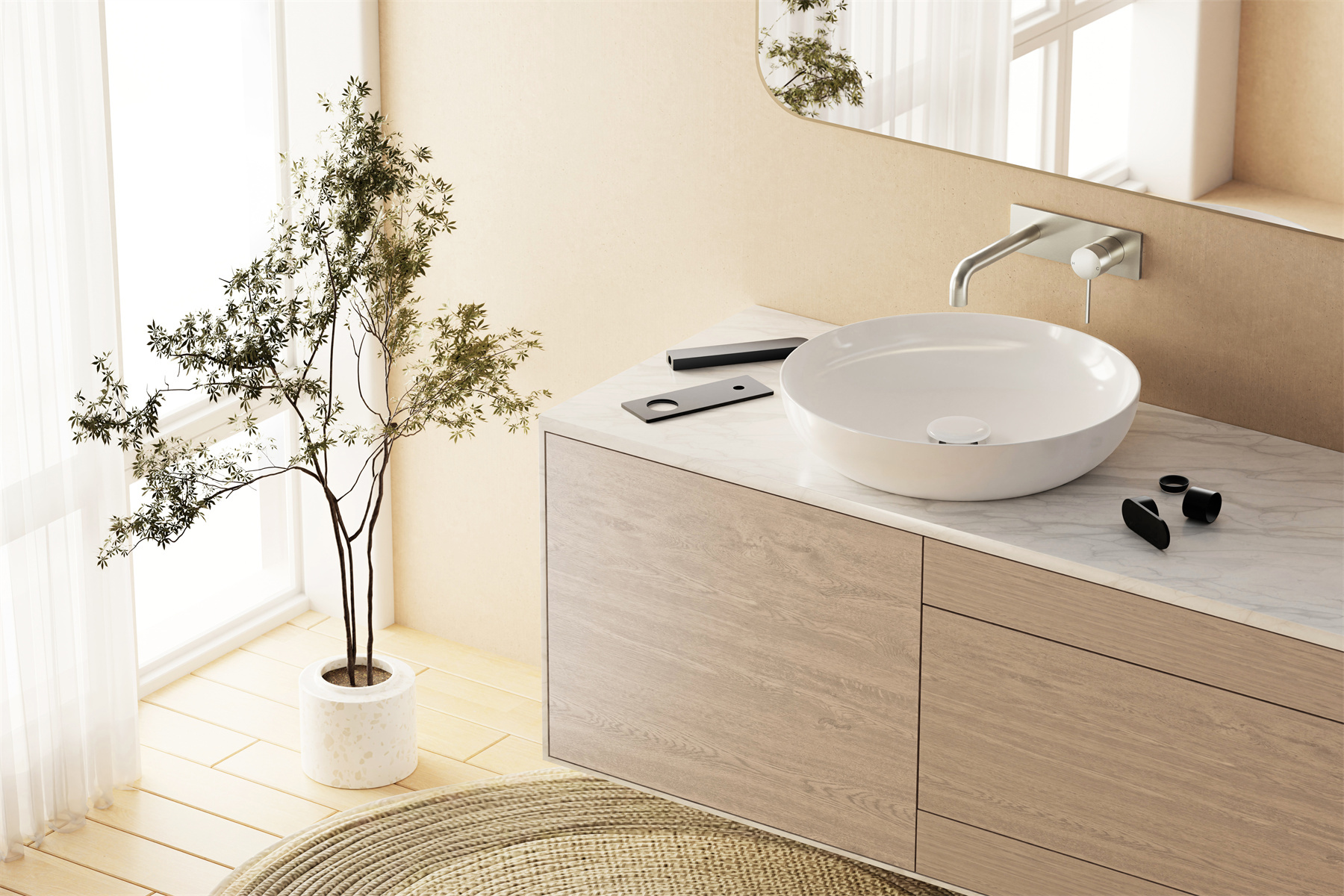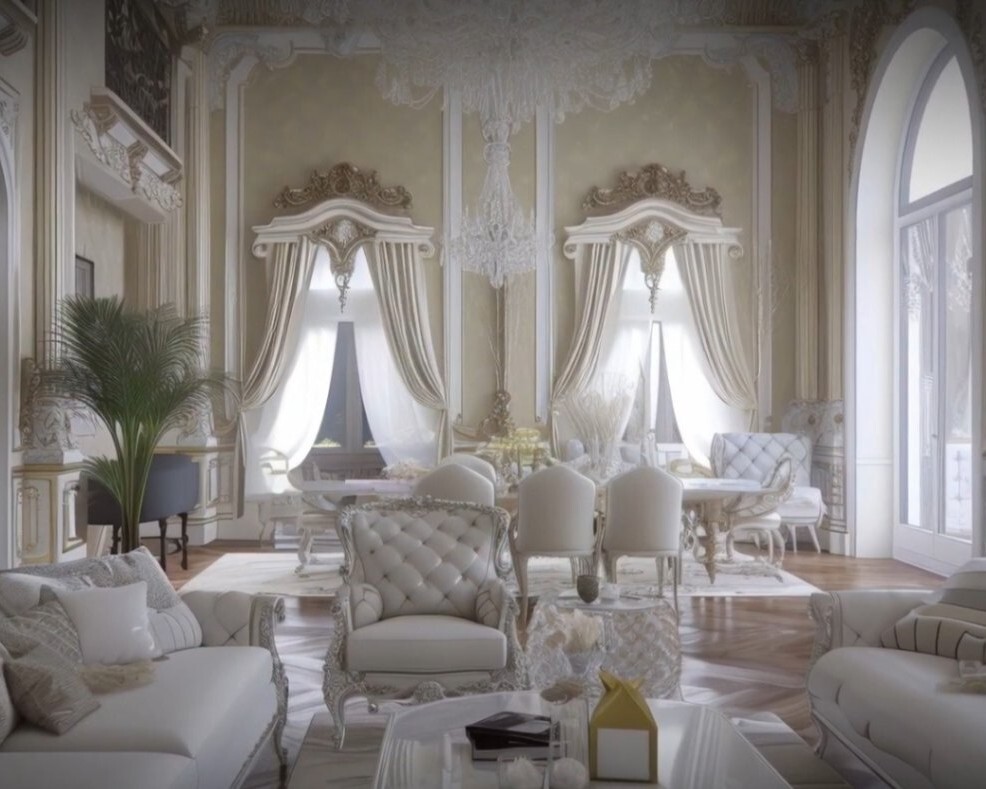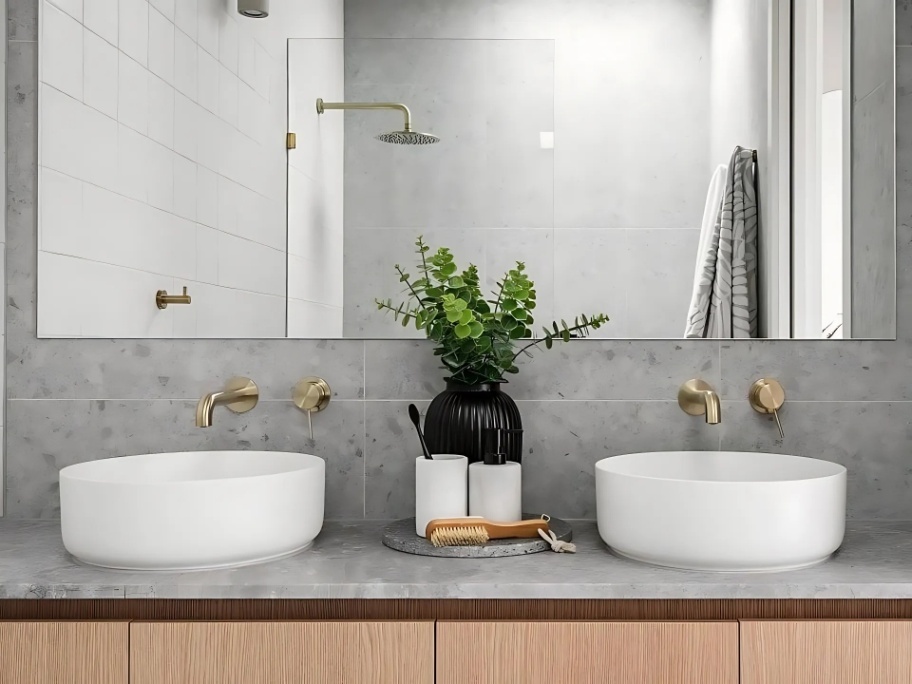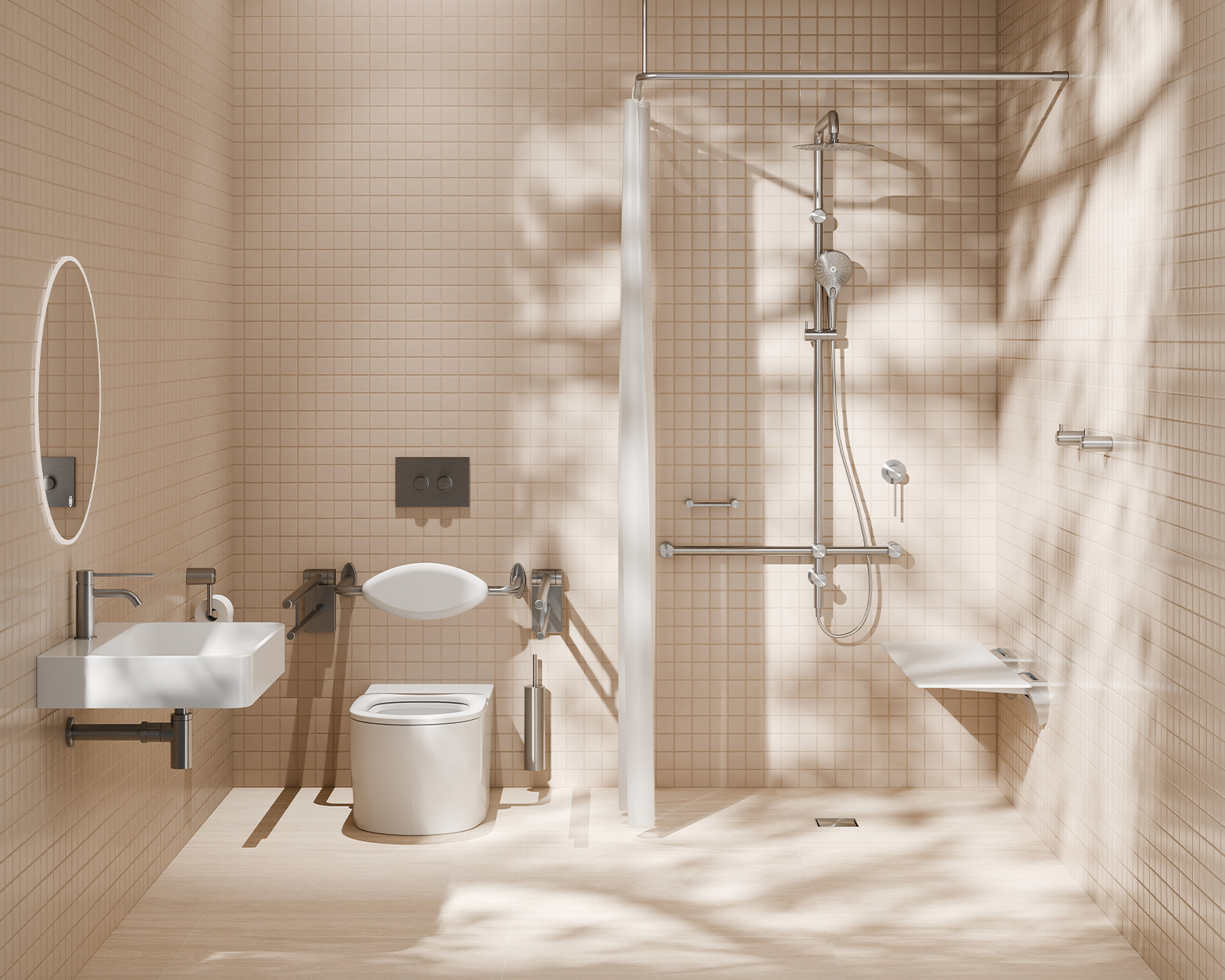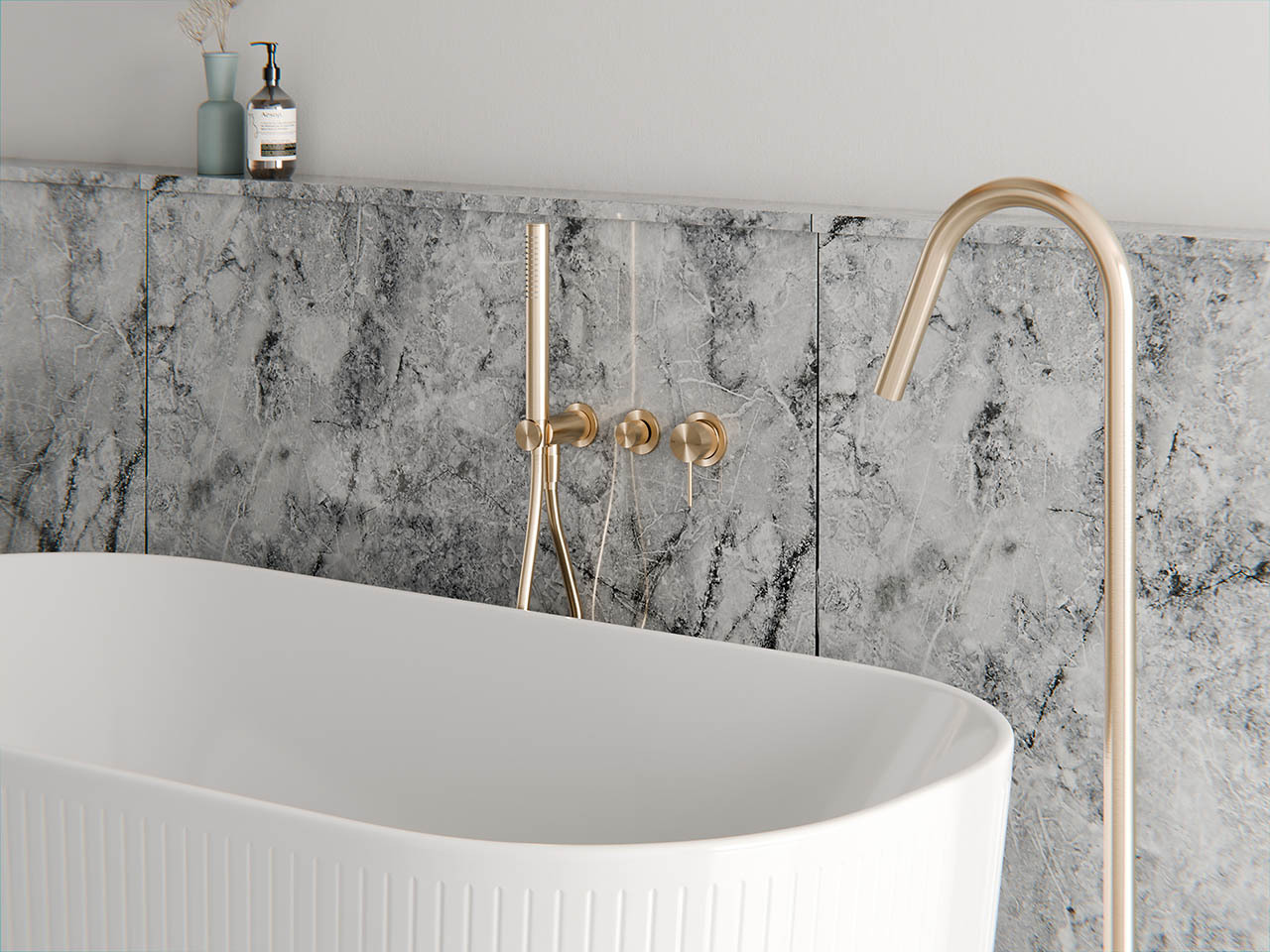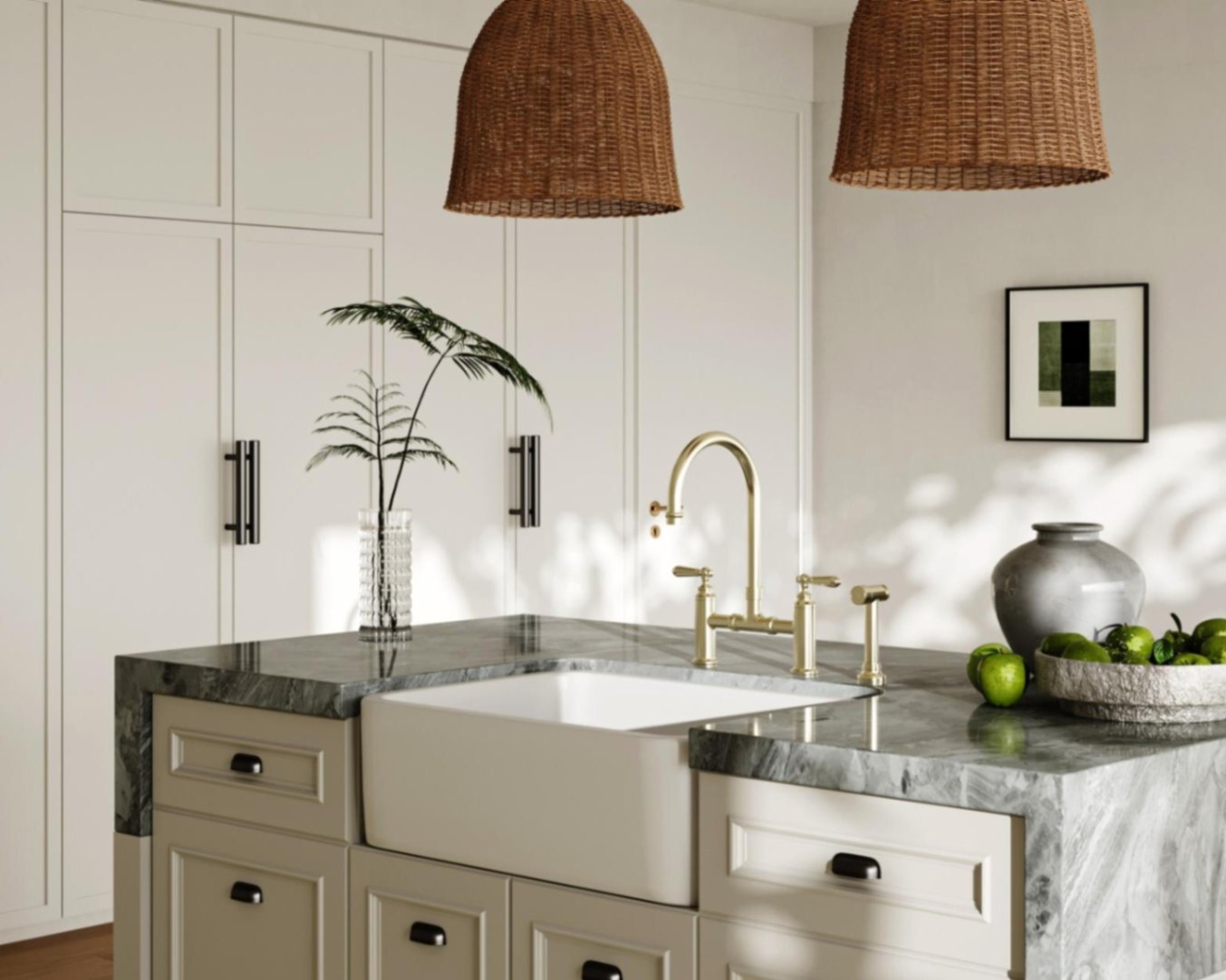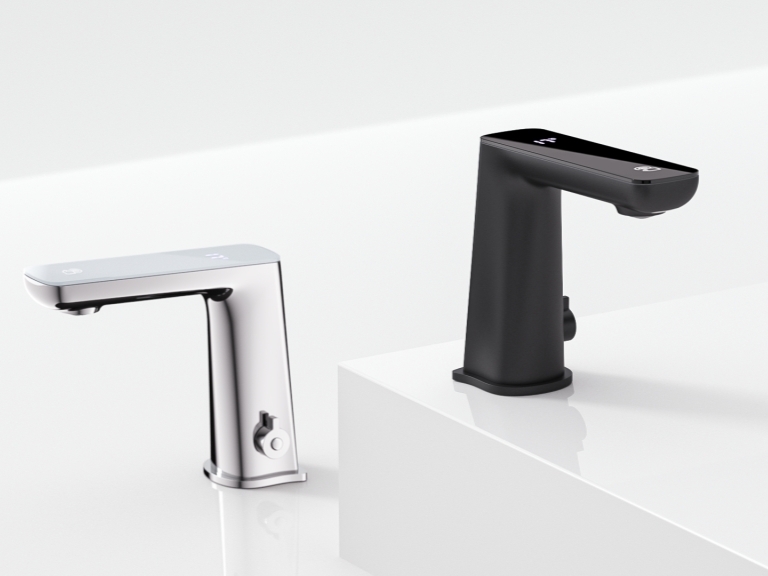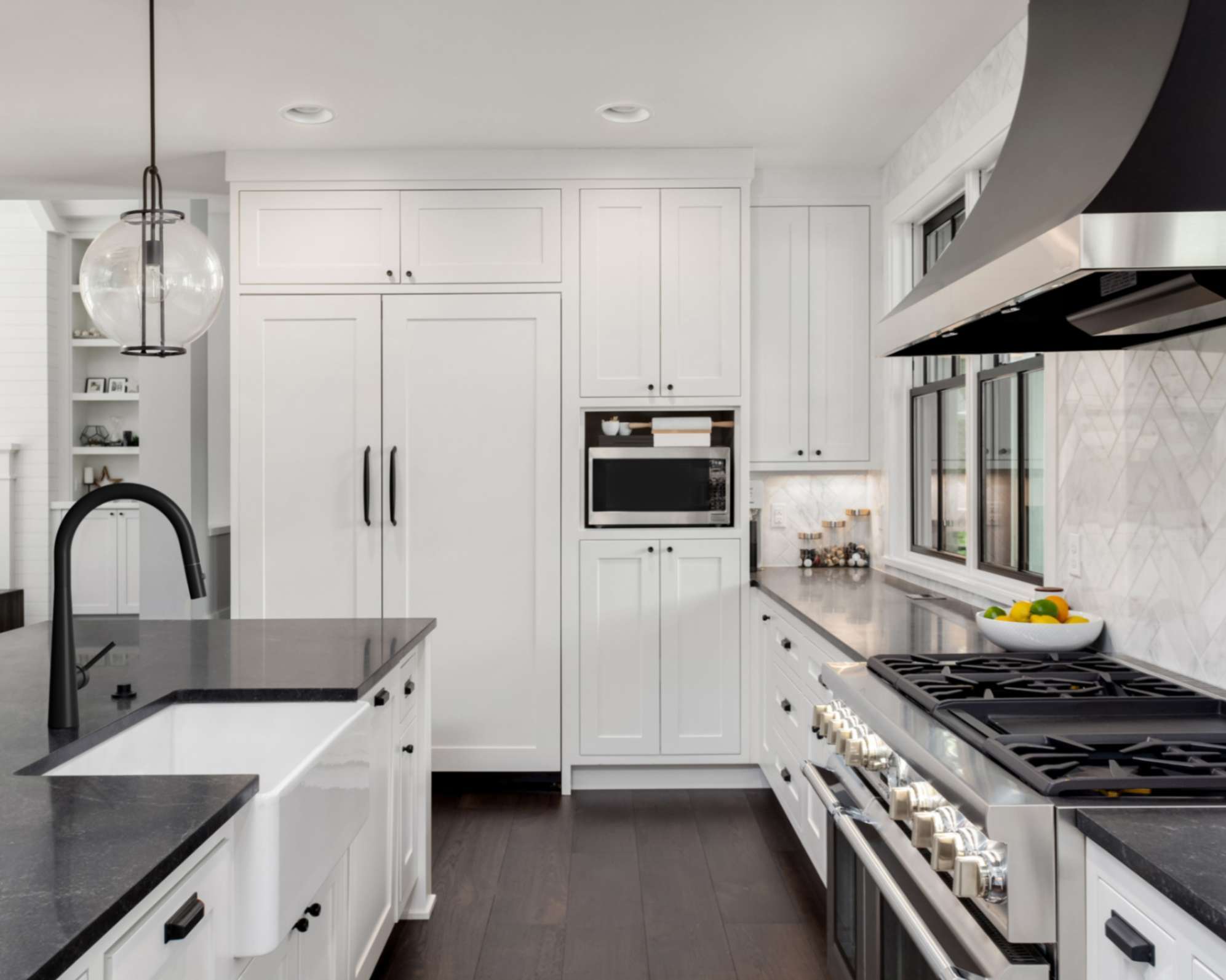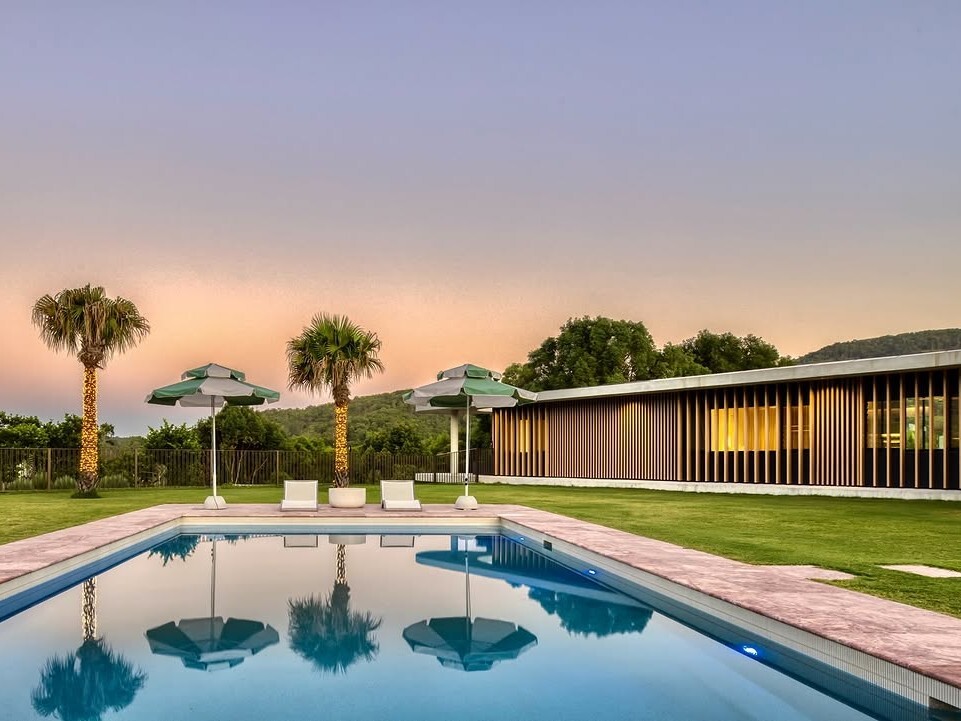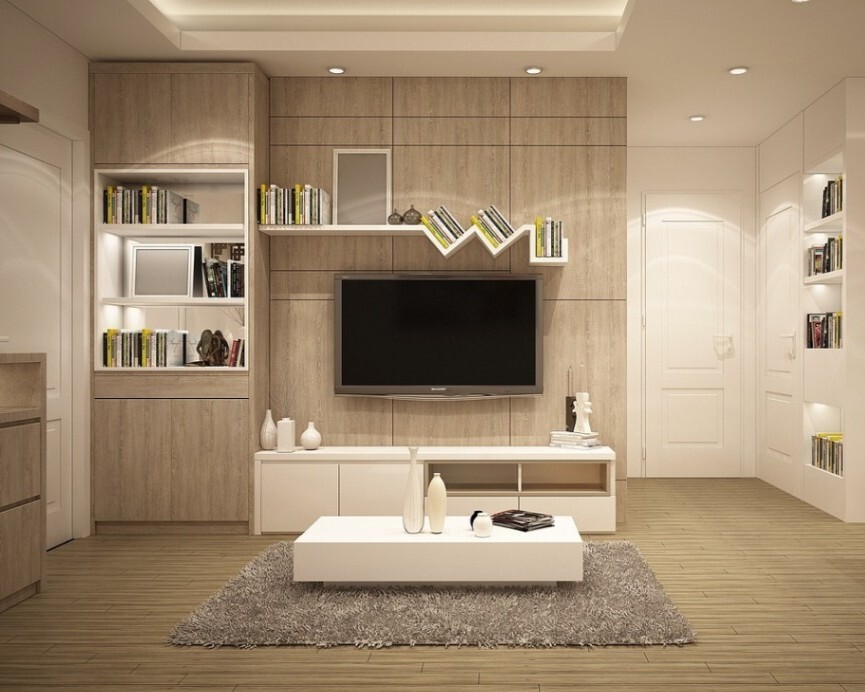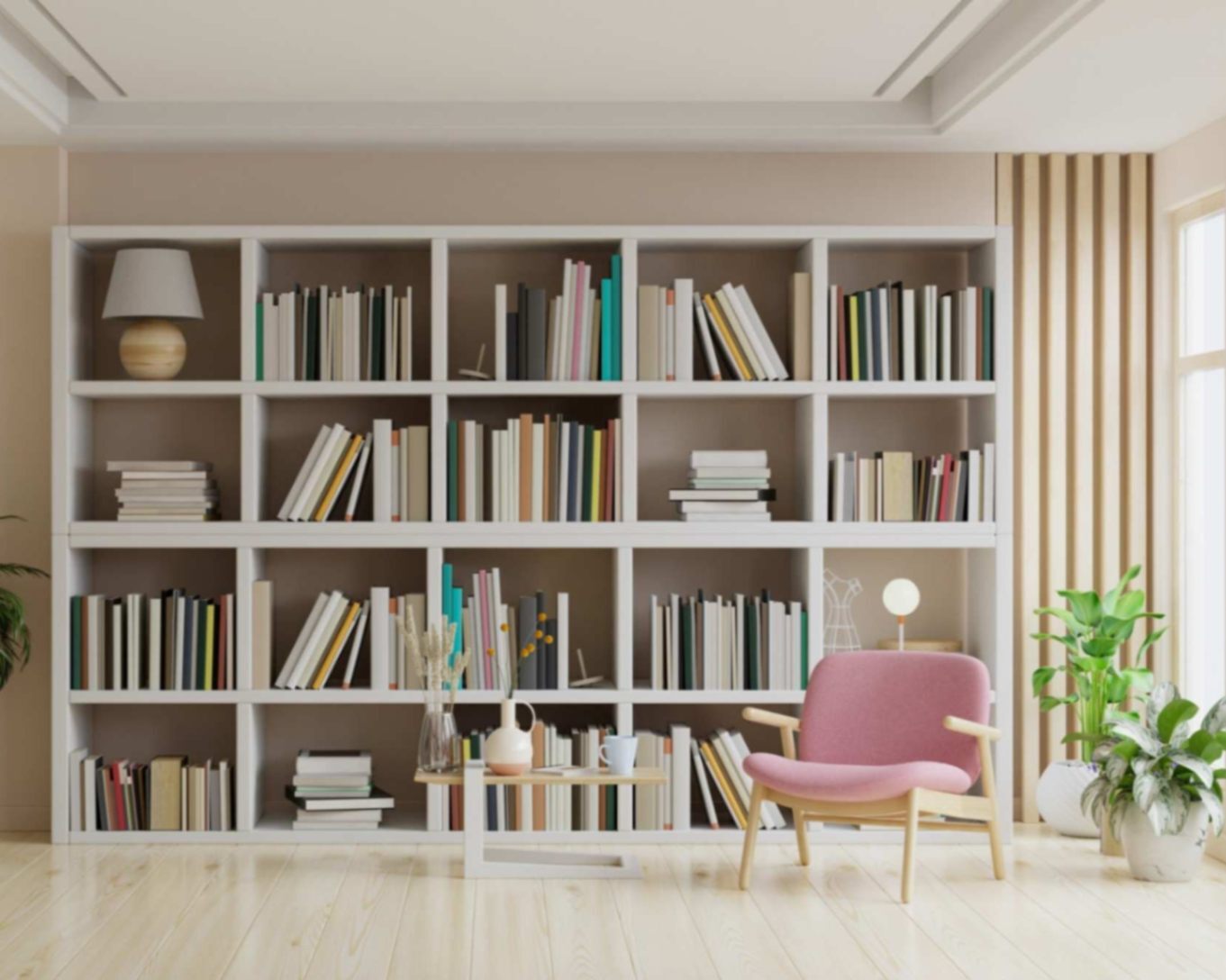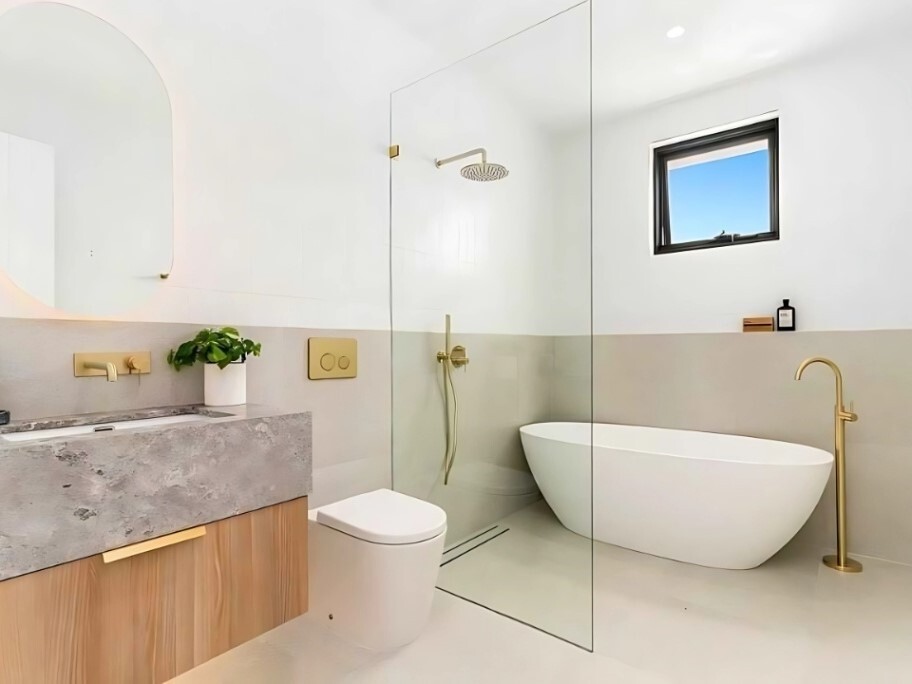
How to Add Texture to Your Home: The Ultimate Guide
Let’s be real—your home deserves more than just four boring walls and a lonely couch. It deserves character, warmth, and that irresistible vibe that makes you say, “Why would I leave when I’ve got this?” Lucky for you, adding texture isn’t some complicated wizardry. In fact, with a few tweaks and a bit of flair, you’ll turn your space into a cozy sanctuary—one throw pillow and accent piece at a time.
And hey, while you’re jazzing things up, check out Nero Tapware’s stunning tapware collections (Zen, Kara, Mecca Care, and more!). Our tapware brings just the right amount of texture to your kitchen or bathroom, balancing style and personality like a pro. Contact us now for assistance!
Understanding Texture: What is Texture in Interior Design?
So, texture—what’s the big deal? It’s that “ooh, that’s soft” moment when you brush against a velvet cushion or the satisfying cool sleekness of a stone countertop. It’s not just about how something feels under your fingers; it’s also about how it looks—inviting, layered, and alive. Texture is the secret sauce that transforms a room from meh to “Wow!”.

Here’s the thing about texture: it’s sneaky. You don’t always notice it right away, but when it’s missing? Boy, you’ll feel it. Texture gives you depth, personality, and that quiet sense of, “Yep, this place is mine.”
You don’t need a design degree or a fancy mood board to get this right, either. Mixing smooth surfaces with rough elements, soft with shiny—it’s like layering a perfect outfit. Trust me, even if your design instincts are more “follow-my-gut” than “Pinterest-perfect,” adding texture is something anyone can pull off.
Importance of Texture in Interior Design: Why Should You Add Texture to Your Home?

Let’s get one thing straight: texture matters. It’s the unsung hero that turns any space from flat and lifeless into something that feels rich, intentional, and downright cozy. You know that moment when you walk into a room, and everything just clicks? That’s texture working its quiet magic. Here’s why it’s worth caring about:
#1. Adds Depth and Dimension
Imagine a room with nothing but smooth surfaces. It’s like eating plain toast—sure, it’s fine, but it could be so much better. Texture is the butter, the jam, and maybe even a little honey. A plush rug here, a polished wood table there, and suddenly your room has layers that make you want to touch everything (in a totally socially acceptable way).
#2. Creates Moods and Aesthetics
Want your living room to feel like a cozy mountain cabin? Throw in a chunky knit blanket, some faux fur cushions, wool rug, and a wood coffee table. Craving that sleek, high-end hotel vibe? Glossy finishes, smooth leather, and brushed metal are your new best friends. Texture sets the mood like no paint color ever could—just without all the fumes.
#3. Enhances Warmth and Comfort
Let’s face it, you want your home to feel like a hug, not a museum exhibit. Soft, inviting textures—like velvet cushions or a shaggy rug—are basically comfort food for your senses. Smooth surfaces are great for style, but those soft touches? That’s where the magic happens.
Pro tip: faux fur blankets are not just cozy—they also make you feel like royalty lounging on your throne (even if it’s just a sofa from IKEA).
#4. Works with Any Design Style
Texture is the great chameleon of design—it fits in anywhere. Love minimalism? Texture keeps your space from looking too cold or clinical. Obsessed with boho-chic? Load it up—there’s no such thing as too much texture in boho land. Whether you’re all about simplicity or live for maximalism, texture is your universal tool for making any room feel right.
Bottom line?
If your space feels blah, texture is the quick fix that delivers “Whoa, I live here?” vibes. It’s like upgrading your plain latte to one with foam art—it doesn’t take much, but boy, does it make a difference. Go ahead, throw on a velvet pillow, add that rustic wood bench, and let your space flaunt its new layers of personality.
And if you want an easy way to sprinkle in texture while leveling up your style game, Nero Tapware’s collections have you covered. (Our brushed finishes are like jewelry for your kitchen and bathroom—functional and fabulous.)
So what are you waiting for? Go forth, layer it up, and make your home feel as good as it looks. And remember—if you’ve got toast, butter it. If you’ve got a room, texture it.
Also Read: 17 Best Bathroom Plants for Low Light, Humid Environments, & More!
4 Key Ways to Add Texture to Your Home: How to Use Texture in Interior Design

Here’s how to add texture to the design of your home – because let's face it, no one wants to live in a place that feels flat and one-dimensional. You need layers, materials, and a little bit of fun to make your space feel alive.
- Layering Textures
- Mixing Materials
- Contrasting Textures
- Utilizing Natural Elements
#1. Layering Textures
Layering textures is your chance to get playful, a little like putting together an outfit for a special day – mix and match until it feels just right.
Here’s how you can layer textures effectively:
- Mix Rough and Smooth: Consider the feeling of a sleek leather sofa, accompanied by a chunky knit throw. The smoothness of the leather meets the coziness of the knit, creating not just a visual appeal but a tactile invitation. Trust me – if you can’t stop running your fingers over it, you’ve got a winner.
- Try Different Fabrics: You don’t need to be shy about this. Try pairing velvet cushions with cotton or linen throws. It’s a kind of fabric party where everyone’s invited. You might even add a little linen curtain by the window for an effortless flow.
- Play with Color: Don’t just stop at texture. Watch how colors interact. A muted, monochromatic scheme is like the steady beat of a drum, while contrasting colors strike up a lively rhythm. A pop of color here and there can make all the difference. Trust me, a bright cushion on a neutral chair is all it takes to elevate a room.
#2. Mixing Materials
This is where you can really have fun – combining different materials to give your space that layered, dimensional feel.
Here are some quick tips to get you mixing like a pro:
- Pair Different Types: A wooden dining table and sleek metal chairs? A match made in design heaven. Leather with glass, stone with fabric – you can make the most unexpected combinations work beautifully. Try pairing a metal side table with a leather armchair, it adds something unexpected and smart.
- Experiment with Textures: Picture smooth glass beside rough stone – it's like the perfect balance of opposites. A little contrast here gives your room life. If you're feeling bold, add a glass vase beside a stone feature – it's subtle but striking.
- Embrace Vintage: You might be surprised how a single vintage piece can completely transform the feel of a room. Maybe it's an old dresser in a modern room or a vintage mirror above a sleek console. Don’t hesitate to let these quirky pieces speak for themselves. It adds personality and warmth – an understated invitation to sit back and stay awhile.
#3. Contrasting Textures
Contrasting textures are your little secret to creating an unexpected balance. You’re blending what feels like opposites, but somehow, they work in harmony.
Here are some tips to make the most of contrasting textures:
- Smooth and Textured: Think about the elegance of shiny marble alongside the rustic charm of reclaimed wood. These contrasts make each element stand out in its own way, yet they belong together in the same room. We recommend placing a stone sculpture on a smooth glass table to let both materials shine.
- Hard and Soft: The balance between hard and soft materials brings warmth and livability to your space. Imagine a steel lamp next to a soft velvet cushion. It’s the combination of comfort and sharpness that makes everything feel just right. A metal frame bed with soft bedding – simple, but it works.
- Shiny and Matte: Playing with finishes can make a room feel dynamic. A shiny ceramic vase sitting against a matte-painted wall – there’s something visually intriguing about that. It’s a subtle way to bring focus to one feature, and it doesn’t need much to stand out.
#4. Utilizing Natural Elements
Bringing natural textures into your home is like letting the outdoors gently make its way inside. It’s calming, grounding, and utterly timeless.
Here are some quick tips to invite nature inside your home:
- Add Plants and Greenery: Plants do wonders for a space – they’re like the final touch in a well-crafted room design. You’ll notice how they breathe life into a room. A leafy plant in the corner can shift the entire mood of the space. Go ahead, get a few – just be mindful not to let them take over. A small herb garden by the window is both charming and practical.
- Choose Natural Materials: Materials like wood, stone, and rattan create a warm, inviting atmosphere that feels connected to the earth. A reclaimed wood coffee table or a stone feature wall adds a sense of permanence and history to a room. Don’t shy away from these textures – there’s something about the raw beauty of them that just feels right. If you’re feeling adventurous, try a jute rug for that perfect earthy touch.
- Incorporate Organic Textures: Driftwood, woven baskets, and natural fiber rugs – they all have a way of making a space feel homey and authentic. These textures create warmth, making a room feel lived-in and welcoming. They’re great for adding layers of comfort. Imagine a woven basket beside your favorite reading chair – simple, yet cozy.
Also Read: A Buyer's Guide: 27 Tips on How to Choose Bathroom Tiles
8 Specific Areas to Add Texture to a Room & Techniques You Can Follow

Every area of your home is brimming with chances to add texture to enhance both its functionality and visual charm. From walls and floors to furniture and decor, here are some practical ideas on how to add texture to your home:
- Walls
- Flooring
- Textiles
- Lighting
- Accessories
- Plants
- Art
#1. Walls

Let’s talk about your walls, shall we? They don’t have to be the blank canvases they’ve been – let’s give them a little life.
- Textured Paint and Wallpaper: Why settle for basic when you can elevate your walls with some texture? Stucco, grasscloth, or embossed designs are like the unsung heroes of interior design. They add warmth and character and trust me, your bland walls will thank you. (Pro tip: This is a good excuse to finally stop staring at that sad, empty space above your couch.)
- Accent Walls: Ready to make a statement? A bold accent wall can completely transform a room. Whether it’s reclaimed wood, exposed brick, or even some fancy patterned tiles, it’s the quickest way to turn a plain room into something that’ll have your guests talking. Don’t be shy – one wall can change everything.
- Wall Treatments: If you’re feeling particularly adventurous, try beadboard, shiplap, or molding. These little touches add architectural charm without breaking the bank. And don’t forget: a custom paint job or stain will let you truly make it your own. A little molding never hurt anyone – well, except maybe your wallet, but we’re all friends here, right?
#2. Flooring

If your floors could talk, what would they say? Let’s give them something to shout about.
- Area Rugs: Area rugs are your floor’s best friend. They add color, warmth, and definition – especially on cold, hard surfaces like hardwood or tile. And don’t overthink it: different pile heights, patterns, and materials make it all come together. You don’t need to get fancy, but hey, a little texture never killed anyone. (Tip: A rug is a great way to hide that one spot on the floor you never got around to fixing. No judgment.)
- Layering Rugs: Think of rug layering like fashion for your floors. A flat, neutral rug underneath a smaller, textured one creates depth and makes the room feel like it’s had a bit more thought put into it. It’s an easy trick that adds instant style, and a great way to give your space a little... personality.
- Natural Fiber Rugs: For a laid-back, earthy feel, try a natural fiber rug made of jute, sisal, or wool. They’re strong, durable, and just soft enough to make you want to lay down and nap. But don’t get too comfortable – they’re great for style, not sleep.
#3. Furniture

Here’s the deal with furniture: it’s not just for sitting. It’s for making a statement and elevating your space.
- Textured Materials: Whether it’s carved wood, velvet, or distressed finishes, your furniture should do more than serve a purpose – it should look good doing it. A velvet sofa or a wooden coffee table with natural grain patterns brings both texture and charm. Get creative with it; no need to stick to just one material – variety is the spice of life.
- Metal Accents: A little metal here and there never hurt anyone. Look for pieces with metal details – brushed nickel, antique brass – these materials add sophistication and balance out softer textures like fabric or wood.
- Unique Shapes: Furniture with interesting shapes gives the room some intrigue. A sculptural chair or an asymmetrical bookshelf adds personality and maybe even a bit of drama. And hey, it’s not just for show – oddly shaped furniture can be practical, too.
- Upcycling & DIY: If you’re feeling crafty (or have an old piece of furniture that could use a little love), consider upcycling. Nailhead trim, new upholstery, or distressing an old coffee table can give new life to a tired piece. Sometimes, it’s the smallest changes that make the biggest difference.
Also Read: How to Choose a Color Palette for Your Home's Interior Design
#4. Textiles

Textiles are your space’s accessories, and we all know how accessories can make or break an outfit.
- Fabric Variety: Mixing fabrics like velvet, linen, and cotton adds richness to your space. Velvet cushions, for instance, make the room feel cozy and luxurious, while linen blankets keep things light and breezy. It’s like having a wardrobe for your home – don’t wear the same thing every day.
- Layering Pillows & Throws: Pillows and throws are a cheap (and easy) way to add texture and a welcoming vibe. Mix up the shapes, sizes, and materials. Throw a few velvet cushions onto your linen sofa and watch your guests immediately feel at home.
- Textured Curtains: Curtains are your chance to play with texture. Go for heavier fabrics like velvet for a more luxurious feel or sheer linen to let in light while still adding interest. Your windows deserve to be dressed as well as the rest of the room.
#5. Lighting

Lighting doesn’t just have to be functional. It can highlight all the lovely textures in your space and create some drama.
- Textured Light Fixtures: Choose light fixtures with some personality. Rattan, ceramic bases, or even a unique lampshade can add texture and depth. It’s like adding jewelry to your outfit – small detail, big impact.
- Bulb Temperature: Don’t underestimate the power of the right bulb. A warm white bulb creates a soft, flattering glow that highlights textures beautifully, while a cool white bulb gives your space a modern, crisp look. It’s all about setting the right mood – think of it as mood lighting for your room.
- Layered Lighting: Layering lights (table lamps, floor lamps, wall sconces) brings dimension to your space. You don’t want your room to be lit like a crime scene, so make sure to create some cozy focal points with your lighting.
- Shadows & Highlights: Placement is key when it comes to lighting. Shadows and highlights play off textures in such a fun way – it’s like painting with light. You’ll be surprised at how much more depth it adds to the space.
#6. Accessories

Accessories aren’t just knick-knacks—they’re the finishing touches that pull your design together.
- Textured Accessories: Look for accessories made from interesting materials like ceramic vases, glass sculptures, or metal baskets. These pieces are more than just decor – they’re texture in action. Trust me, your coffee table will look way more appealing with a well-placed vase of fresh flowers.
- Natural Elements: Bring a bit of the outdoors inside. Branches, dried flowers, and seashells can add an organic touch to your space. It’s the “nature reserve” of your living room – without the bugs.
- Layering Textures: Layering textures in accessories is key. Try placing a wool throw on a leather chair, or stacking pillows in various textures on a woven basket. It’s like mixing all your favorite things into one beautiful arrangement.
- Mirrors: Mirrors do more than reflect light – they add texture, especially when framed in something interesting. Try a rustic wood frame or a sleek metal one for extra visual appeal.
Also Read: 9 Types of Tapware Finishes: Colors | Pros & Cons
#7. Plants

Let’s be real: every room needs a little greenery. It’s nature’s way of adding texture and life.
- Vertical Gardens: If you want a bold, dynamic look, try a vertical garden. It brings texture and style to the wall while making your space feel larger. It’s the garden of your dreams – without the dirt under your nails.
- Planters & Pots: Planters don’t just hold plants – they add texture, too. Choose ones made from ceramic, terracotta, or woven baskets to complement your decor. They’re small details, but they pack a punch.
- Grouping Plants: Grouping plants of different heights and textures creates a beautiful arrangement. Plant stands or shelves can help elevate them – literally and figuratively. It’s like arranging a little mini-jungle in your living room.
#8. Art

Art doesn’t just hang there looking pretty. It should add texture and bring the space to life.
- Mixed Mediums: Art in different materials (paintings, sculptures, mixed media) creates a tactile experience on your walls. Thick brushstrokes or textured sculptures invite touch and attention – without the risk of actually touching it.
- Gallery Walls: Mix up your frames. Different sizes, shapes, and textures in a gallery wall create a dynamic, eye-catching display.
- Textured Sculptures: Sculptures are like the secret agents of your decor. They add depth and interest in ways that flat artwork can’t. They’re a conversation starter, too.
- Framing Techniques: A unique frame can make all the difference. Try a worn wood frame or shadow box for added texture. It’s like giving your art a new outfit, and who doesn’t love a good wardrobe change?
Also Read: 26 Minimalist Bathroom Ideas, Design, & Decor
More Tips & Tricks When Adding Texture to Your Interior Design

Incorporating texture into your home design doesn’t have to feel overwhelming. Here are some practical tips and tricks to help you seamlessly blend texture into your space, ensuring a cohesive and inviting environment:
- Start Slowly: Focus on one room, adding one textured item to see how it goes with what you already have.
- Don't Be Afraid to Experiment: Try out different textures to find what you like. Mixing unusual items can be unique and personal.
- Consider the Overall Style: Pick textures that fit with your home’s look. Textures should match the style you want.
- Layer for Depth: Use various textures to give a multi-dimensional feel. Layers add a lot of interest.
- Embrace Imperfection: Interesting textures provide character and charm. Materials with a bit of wear can be very pleasing.
- Think Outside the Box: Be creative with textures. Use items you might not usually think of for decor to add texture and interest.
Also Read: 29 Eco-Friendly Bathroom Remodel & Upgrade Ideas
Conclusion
Adding different textures to your home makes it feel warm and snug – like a blanket! Mixing textures can turn your space into a comfy and beautiful haven. Try it through your furniture, throw pillows, and decor.
Don’t forget your walls, floors, and lighting! Introducing natural elements like plants and art can freshen up your home. When you put it all together your home will be you and a happy place to live in!
Ready to add the finishing touches to your home? Nero Tapware’ premium range of tapware not only serves a purpose but adds texture to your space. Whether you like the shine of polished nickel or the ruggedness of brushed bronze we have the styles to make your sink a feature!
FAQs
How do you add texture to your interior design at home?
To add texture to your home start by mixing textiles like rugs, window treatments, throw pillows, blankets, bedding, and upholstery. Play with fabrics like leather, velvet, silk, bouclé, wool, cotton, and linen depending on the look you want to achieve.
You can also layer textures by combining smooth surfaces with rough ones, textured furniture, and natural elements like plants and flowers. For example, combining a leather sofa with a chunky knit throw adds depth and warmth to a room.
Why add texture to your home?
Adding texture adds depth, warmth, and character to your home. It turns a plain space into a cozy, inviting, and sophisticated one. Texture adds layers of visual interest and helps set the mood whether you want a snug warm atmosphere or a sleek modern look. Without texture, rooms can feel flat and boring but with it, your home gets richness and charm.
How can I add texture to my walls?
You can add texture to your walls by using textured paint, wallpaper, or wall treatments like beadboard or shiplap. Create texture by painting with rolling techniques for a subtle layered look or try sponge dabbing for a more artistic effect. For a bold statement, try an accent wall made of materials like reclaimed wood, exposed brick, or patterned tiles.

